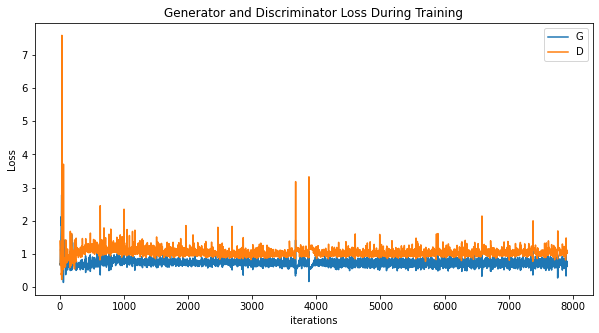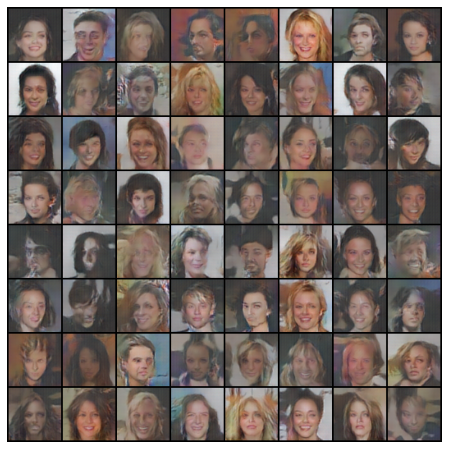Unsupervised Representation Learning with Deep Convolutional Generative Adversarial Network (DCGAN) implementation
This is an implementation of the research paper "Unsupervised Representation Learning with Deep Convolutional Generative Adversarial Networks" written by Alec Radford, Luke Metz, Soumith Chintala.
Unsupervised Learning with CNNs has not recieved it's due attention. In thier paper, Alec Radford, Luke Metz and Soumith Chintala have tried to "bridge the gap between the success of CNNs for supervised learning and unsupervised learning". DCGAN, as introduced in this paper, is an architecture that demonstrates the strength of CNNs as a candidate for Unsupervised Learning.
The original paper had used three datasets for training the DCGAN namely - Large-scale Scene Understanding (LSUN) (Yu et al., 2015), Imagenet-1k and a newly assembled Faces dataset. However due to computational and other limitations, we have used Large-scale CelebFaces Attributes (CelebA) Dataset.
@inproceedings{liu2015faceattributes,
title = {Deep Learning Face Attributes in the Wild},
author = {Liu, Ziwei and Luo, Ping and Wang, Xiaogang and Tang, Xiaoou},
booktitle = {Proceedings of International Conference on Computer Vision (ICCV)},
month = {December},
year = {2015}
}
The CelebA dataset may be downloaded here as a file named img_align_celeba.zip.
Please write the following commands on your terminal to extract the file in the proper directory
$ mkdir celeba
$ unzip </path/to/img_align_celeba.zip> -d </path/to/celeba>
The resulting directory structure should be:
/path/to/celeba
-> img_align_celeba
-> 188242.jpg
-> 173822.jpg
-> 284702.jpg
-> 537394.jpg
...
Note: You may use any other dataset of your choice. However, please ensure that the directory structure remains the same for the code to be compatible with it.
The DCGAN Architecture has the following components:
- The Generator uses fractional-strided convolutions followed by batch normalisation and ReLU activation for all layers except for the last that uses tanh activation.
- The Discriminator uses strided convolutions followed by batch normalisation and LeakyReLU activation for all layers except for a single sigmoid output.
- The given batch of images are first upsampled through the fractional-strided convolutions of the Generator.
- Batch Normalization is applied to boost the learning process.
- The normalized images are passed thorugh a bounded activation function (ReLU) that helps in a faster convergence of the model and allows it to cover the entire spatial extent of the images.
- The images enter the Discriminator after passing through a final tanh layer. The discriminator uses strided convolutions for downsampling the images following a set of similar actions as the Generator except that LeakyReLU is used.
To use the repo and generate your own images please follow the guidelines below
-
Cloning the Repository:
git clone https://github.com/indiradutta/DC_GAN -
Entering the directory:
cd DC_GAN -
Setting up the Python Environment with dependencies:
pip install -r requirements.txt -
Running the file:
python3 test.py
The test.py file takes the path to the dataset as "/content/dcgan/celeba" dataset by default. Please initialize the DCGAN module with your desired dataset path and train as:
dc_gan = DCGAN(data = <path/to/dataset>)
img_list, G_losses, D_losses = dc_gan.train()Incase you have either no GPU (0) or more than 1 GPU on your machine, consider changing the ngpu parameter while initializing the DCGAN module with your desired dataset path and train as:
dc_gan = DCGAN(data = <path/to/dataset>, ngpu = <number of GPUs available>)
img_list, G_losses, D_losses = dc_gan.train()Check out the standalone demo notebook and run dc_gan here.
Note: Is is advisable to use a GPU for training because training the DCGAN is computationally very expensive.
- Plot to see how D and G’s losses changed during training
- Batches of fake data from G
- Training progression of G
demo.mp4
Please check out the result documentation.



